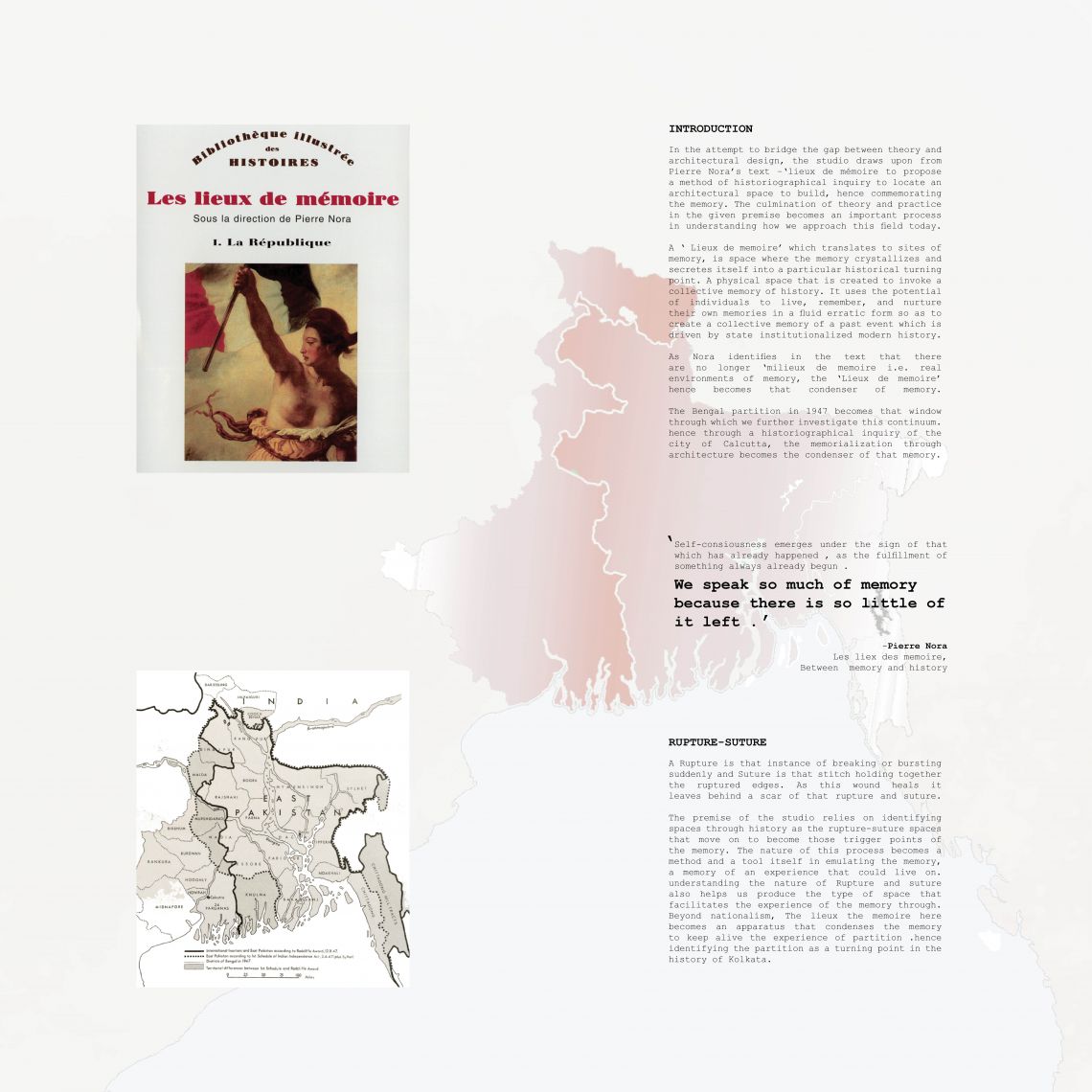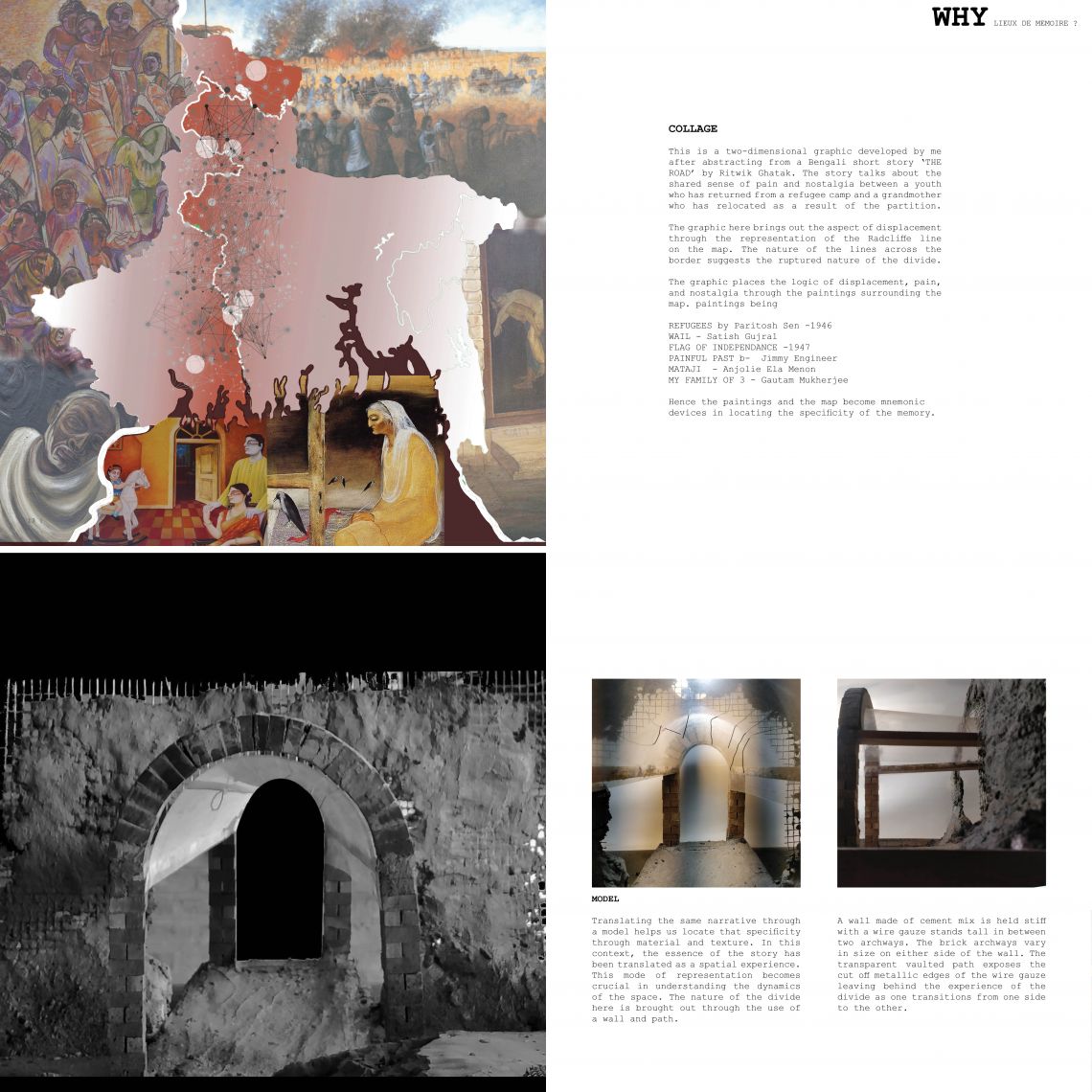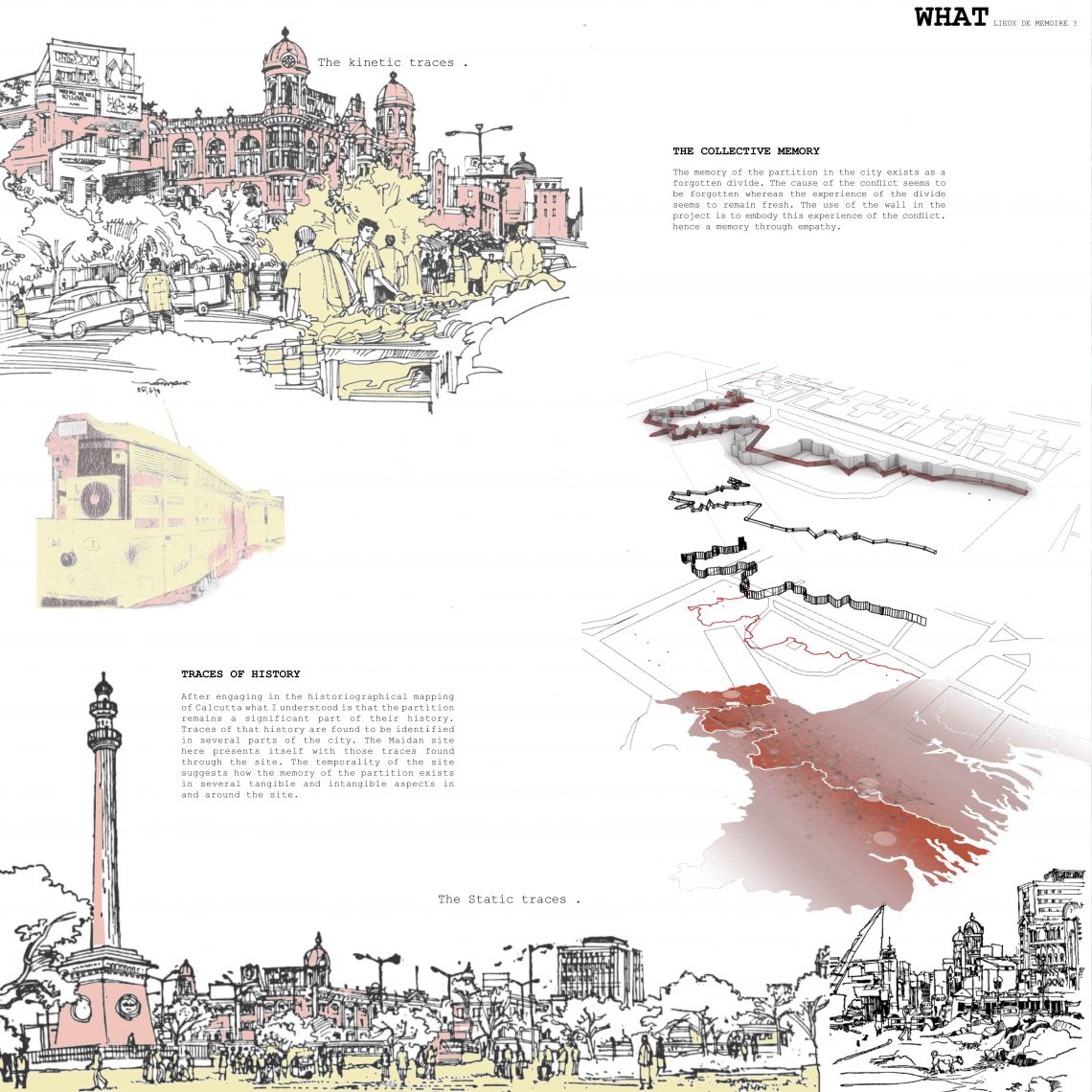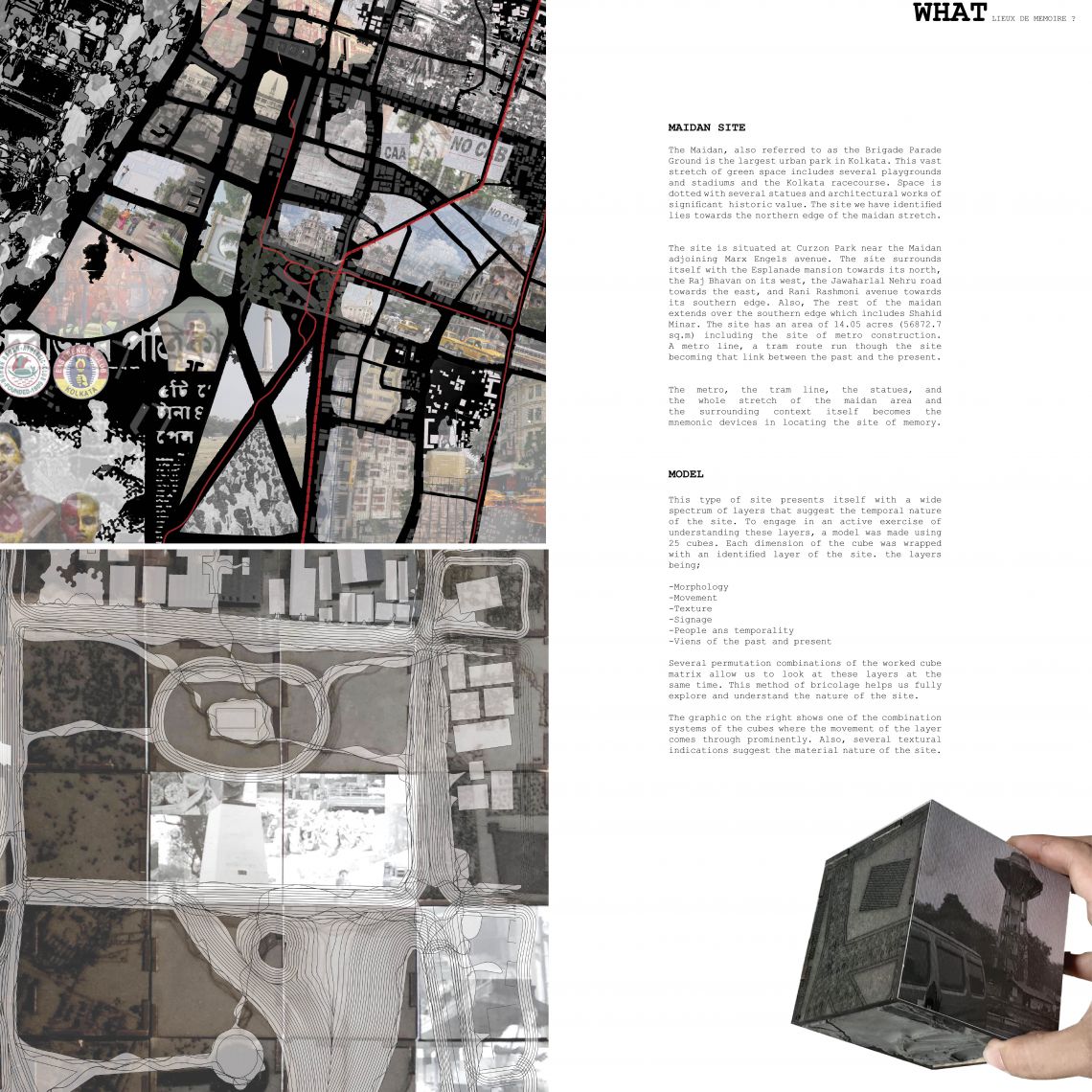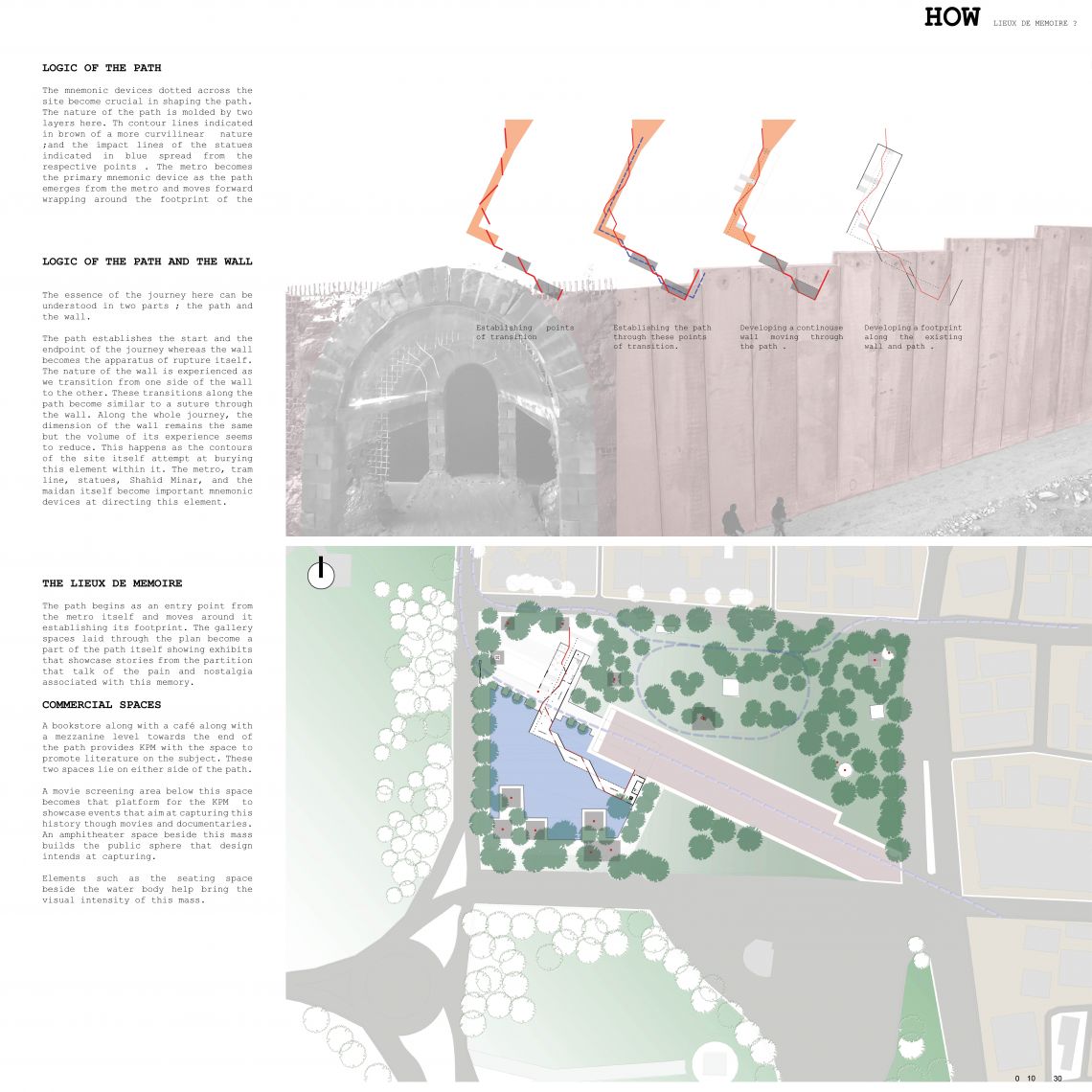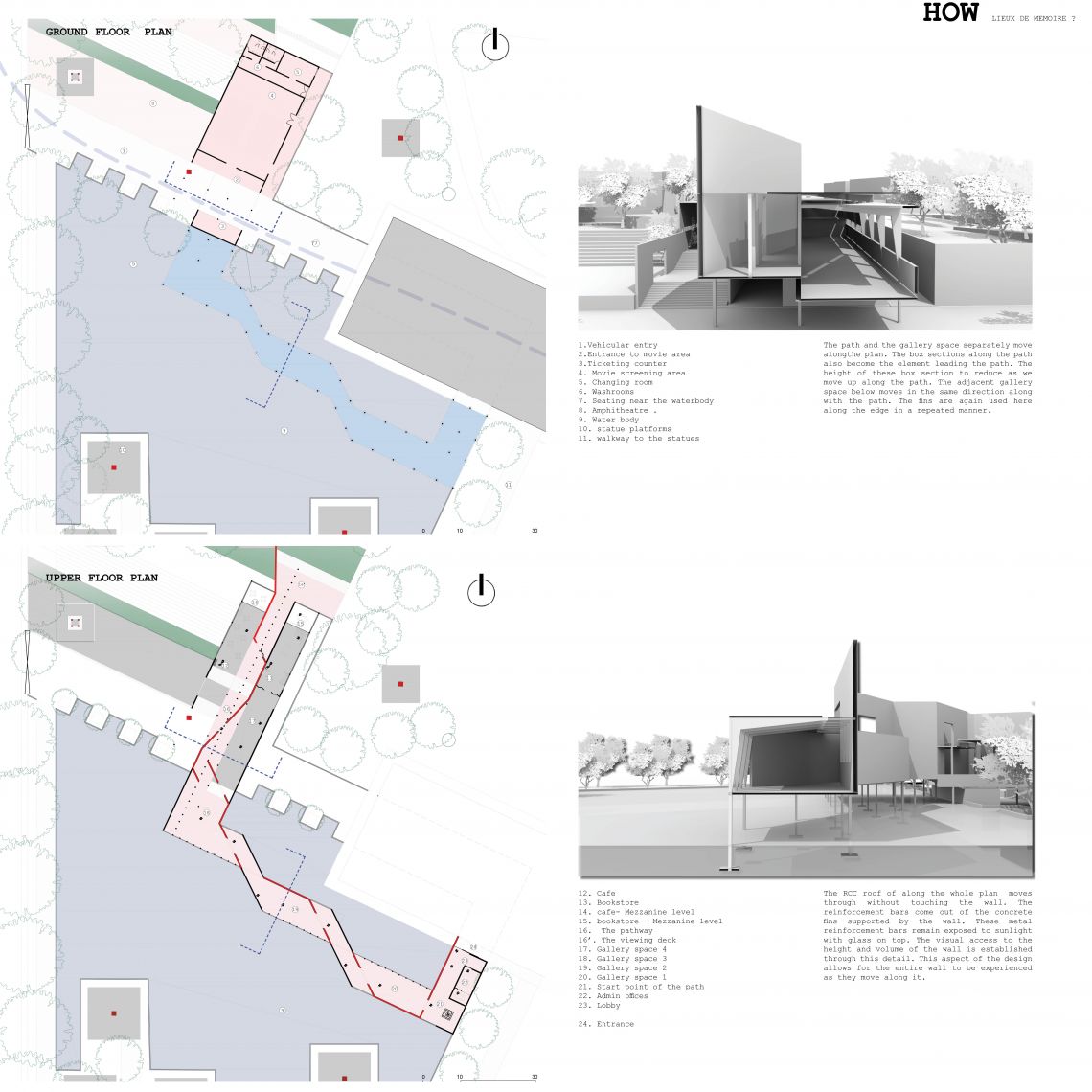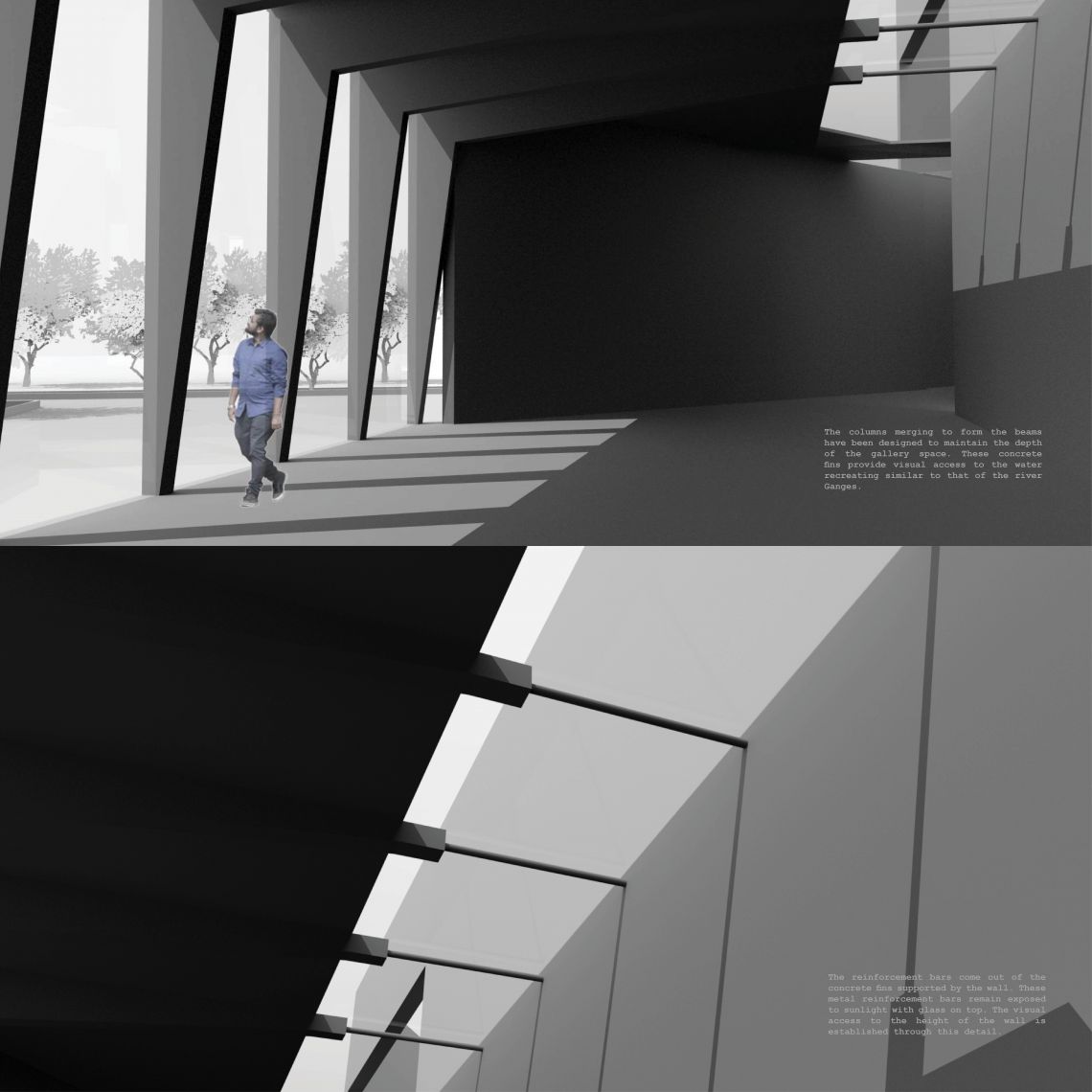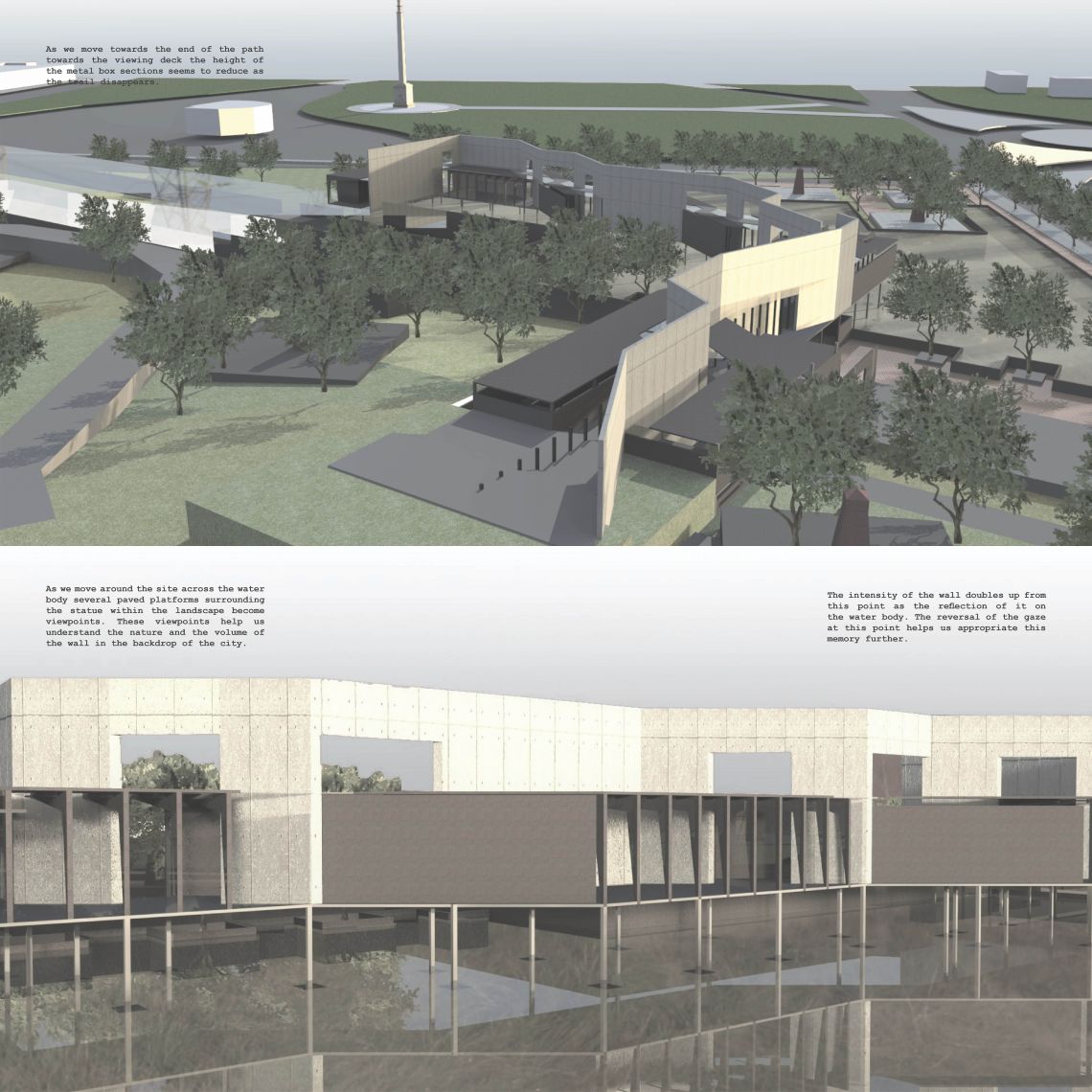Your browser is out-of-date!
For a richer surfing experience on our website, please update your browser. Update my browser now!
For a richer surfing experience on our website, please update your browser. Update my browser now!
In the attempt to bridge the gap between theory and architectural design, the studio draws upon from Pierre Nora’s text –‘lieux de mémoire to propose a method of historiographical inquiry to locate an architectural space to build, hence commemorating the memory. The culmination of theory and practice in the given premise becomes an important process in understanding how we approach this field today. A ‘ Lieux de memoire’ which translates to sites of memory, is space where the memory crystallizes and secretes itself into a particular historical turning point. A physical space that is created to invoke a collective memory of history. It uses the potential of individuals to live, remember, and nurture their own memories in a fluid erratic form so as to create a collective memory of a past event that is driven by state institutionalized modern history. As Nora identifies in the text that there are no longer ‘milieux de memoire i.e. real environments of memory, the ‘Lieux de memoire’ hence becomes that condenser of memory. The Bengal partition in 1947 becomes that window through which we further investigate this continuum. Hence through a historiographical inquiry of the city of Calcutta, the memorialization through architecture becomes the condenser of that memory.
